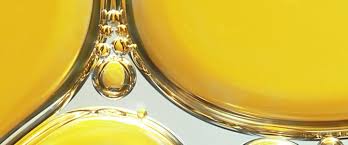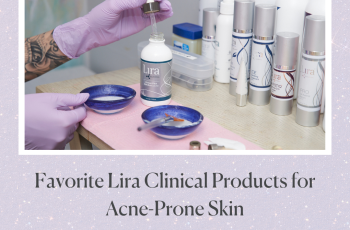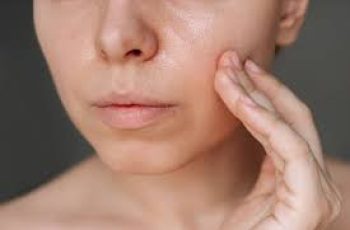
The Science Behind Milk Thistle Extract in Skin Care
In recent years, the field of skincare has witnessed a surge in interest toward natural and botanical ingredients.
Among these, milk thistle (Silybum marianum) has emerged as a promising star, celebrated for its powerful antioxidant, anti-inflammatory, and anti-aging properties.
While traditionally known for its medicinal role in liver detoxification, milk thistle is now capturing the attention of dermatologists, cosmetic formulators, and skincare enthusiasts alike for its remarkable benefits when applied topically.
What Is Milk Thistle (Silybum marianum)?
Milk thistle is a flowering plant native to the Mediterranean region but now grows widely around the world, especially in Europe, North America, and Australia.
Belonging to the Asteraceae family—which also includes ragweed, daisies, and marigolds—milk thistle is easily recognized by its spiky leaves and purple flowers.
Historically, the plant has been used in herbal medicine for over 2,000 years, especially for liver disorders.
The seeds and leaves of the milk thistle plant contain a potent complex of bioactive compounds collectively referred to as silymarin, which is where the majority of its therapeutic value lies.
Understanding Silymarin: The Key to Milk Thistle’s Power
Silymarin is not a single compound, but a mix of flavonolignans—a hybrid of flavonoids and lignans. The primary constituents include:
Silibinin (or silybin) – The most active and extensively researched component.
Silychristin
Silydianin
These compounds possess strong antioxidant, anti-inflammatory, and detoxifying properties.
When applied to the skin, they help neutralize free radicals, reduce oxidative stress, and protect cellular structures from environmental damage.
Antioxidant Protection
Free radicals are unstable molecules generated by UV radiation, pollution, and metabolic processes. These radicals contribute to premature skin aging, DNA damage, and collagen breakdown.
Silymarin helps mitigate these effects by stabilizing free radicals and enhancing the skin’s natural defense systems.
Anti-Inflammatory Action
Inflammation is at the core of many skin concerns—from acne and rosacea to eczema and psoriasis. Silymarin inhibits the production of inflammatory mediators such as prostaglandins and cytokines.
As a result, redness, swelling, and irritation can be visibly reduced.
UV and Environmental Defense
Research suggests that milk thistle may also provide a layer of protection against ultraviolet (UV) damage.
While it should never replace sunscreen, its antioxidant-rich profile can complement SPF products by reducing inflammation and oxidative damage post-UV exposure.
Benefits of Milk Thistle in Skin Care
1. Anti-Aging Effects
The antioxidant capabilities of milk thistle are critical in defending the skin against premature aging.
Environmental stressors such as sun exposure, pollution, and lifestyle factors generate oxidative stress, which depletes collagen and accelerates the appearance of wrinkles and fine lines.
By neutralizing oxidative molecules, milk thistle helps preserve skin firmness, elasticity, and youthfulness.
Moreover, silibinin has been found to stimulate collagen production, further enhancing the skin’s ability to regenerate and repair itself.
This makes milk thistle a go-to ingredient in serums and creams targeting mature or environmentally stressed skin.
2. Acne Reduction and Oil Control
Thanks to its potent anti-inflammatory properties, milk thistle can help reduce the inflammation and swelling associated with acne breakouts.
Furthermore, it exhibits sebostatic effects, meaning it can help regulate sebum (oil) production, a common contributor to acne.
It may also work synergistically with other acne-fighting ingredients like salicylic acid and niacinamide.
3. Skin Brightening and Hyperpigmentation Reduction
Hyperpigmentation occurs due to an overproduction of melanin, often triggered by sun damage, inflammation, or hormonal changes.
Silymarin has been shown to inhibit the enzyme tyrosinase, which plays a crucial role in melanin production.
This action helps lighten dark spots, even out skin tone, and improve the appearance of sun-damaged or uneven skin.
4. Soothing Sensitive Skin
For individuals with sensitive or reactive skin, milk thistle offers a calming solution.
It gently soothes redness and irritation, making it suitable for conditions like rosacea, eczema, and dermatitis.
Because it’s generally well-tolerated, it is often included in formulations designed for delicate or compromised skin barriers.
What is Milk Thistle Made Of?
Aside from silymarin and its subcomponents, milk thistle also contains:
Fatty acids – Essential for maintaining the skin’s lipid barrier and hydration.
Vitamin E – A powerful antioxidant in its own right, often paired with silymarin to enhance antioxidant defense.
Phytosterols – Plant-based compounds that support skin repair and reduce inflammation.
These natural compounds work synergistically to restore, nourish, and protect the skin, making milk thistle a multifunctional ingredient in modern skincare.
How Is Milk Thistle Used in Skin Care Products?
Milk thistle can be found in a wide range of skincare formulations, including:
Facial serums targeting oxidative damage and aging
Moisturizers for soothing and hydrating sensitive skin
Sunscreens enriched with antioxidants for enhanced protection
Spot treatments for acne-prone and inflamed skin
Brightening creams for addressing dark spots and uneven skin tone
Formulators may use either whole milk thistle extract or purified silymarin. The form used depends on the product’s intended purpose, stability requirements, and compatibility with other ingredients.
Safety and Side Effects
Milk thistle is generally recognized as safe for topical use and receives favorable safety ratings from organizations like the Environmental Working Group (EWG).
However, individuals with allergies to plants in the Asteraceae family—such as ragweed, daisies, marigolds, or chrysanthemums—should exercise caution, as allergic reactions may occur.
Potential Side Effects:
Mild redness or irritation (rare)
Allergic contact dermatitis in sensitive individuals
Interaction with other plant-based allergens
As with any new skincare product, a patch test is recommended to assess sensitivity before full-face application.
Who Should Use Milk Thistle in Their Skincare Routine?
Milk thistle can be beneficial for a wide range of skin types and concerns. Here’s a quick breakdown:
Dry and mature skin: Offers hydration and antioxidant support.
Oily and acne-prone skin: Helps regulate oil production and soothe inflammation.
Sensitive skin: Provides calming relief and barrier support.
Sun-damaged or hyperpigmented skin: Assists in brightening and reducing discoloration.
However, to ensure the best results, it’s crucial to match the product with your specific skin type and concerns.
The Baumann Skin Type System, developed by dermatologist Dr. Leslie Baumann, can be a useful guide in choosing appropriate ingredients for individualized care.
Product Recommendations and Formulation Tips
Many high-quality skincare products now include milk thistle extract. When selecting a product, look for formulations that:
List silymarin or milk thistle extract high on the ingredient list
Combine it with other antioxidants (e.g., vitamin C, ferulic acid)
Are free from common irritants like alcohol, synthetic fragrance, or harsh preservatives
Some trusted categories include:
Antioxidant serums (for daily environmental protection)
Anti-aging creams (for nighttime repair)
Soothing balms (for post-procedure care or rosacea)
Final Thoughts: Is Milk Thistle Right for You?
Incorporating milk thistle into your skincare regimen can be a game-changer, particularly if you’re seeking a plant-powered solution that addresses multiple concerns—aging, inflammation, hyperpigmentation, and sensitivity.
Its multifaceted benefits, coupled with a strong safety profile, make it an appealing option for those leaning toward natural and science-backed skincare.
However, the effectiveness of any ingredient depends not just on its inherent properties, but also on the formulation, concentration, and compatibility with your unique skin type.
For personalized advice, consider determining your Baumann Skin Type at Skintypesolutions.com before selecting products that contain milk thistle.


